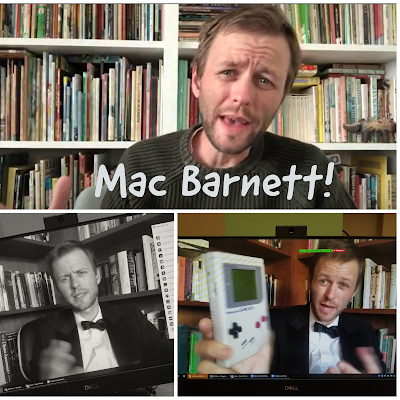Hosting an author visit in a normal year can be daunting. But in a year full of restrictions and new rules? Yikes. Technology fails frighten me, and the thought of Zoom not working in the middle of a school-wide event makes my stomach turn.
But my desire to bring something fun and engaging to my students outweighed my fear. My principal often tells me that things don’t have to be perfect. Everything is a learning experience, including Zoom fails!
A local, independent book store, BookPeople, works with area schools to organize dynamic author visits. I was able to take part in two this year--one pre-recorded and one live. They were amazing. And easy!
First up was Kwame Mbalia, author of the recently-announced 2021-22 Bluebonnet, Tristan Strong Punches a Hole in the Sky. I hosted a live visit with him via Zoom Webinar. (I was able to use the District’s Zoom Webinar account. Check with your district to see if that’s an option.) I hadn’t run a webinar before so I recruited a few of my fellow librarians to help me test it out. My campus IT Support guru joined in and we worked through various scenarios--promoting people to co-hosts or panelists, sharing my screen, spotlighting speakers. It helped me get a feel for the application and gave me greater confidence.
On campus students joined as a group from their classrooms; virtual students used the same link as classrooms to join from home. I chose the Webinar option because it allowed greater control of the crowd. No one was on camera unless I promoted them to panelist.
Students listened to Kwame and then had an opportunity to submit questions through the Q&A. I monitored the questions and fed them to Kwame. My principal and our library coordinator helped me monitor questions, too. That was helpful since it meant I could listen to Kwame while the kids continued to submit questions.
At the end of the visit, I promoted everyone to panelist and invited them to turn on their video. This gave students a chance to wave to Kwame and allowed him to see everyone at once. The students and teachers loved it!

The second visit I hosted was pre-recorded. There was definitely less stress associated with that event, but of course it wasn’t as interactive. This time I was able to bring Mac Barnett to campus. This was a dream come true for me. My students fell in love with him after I introduced them to Triangle.
His timeline for a live visit didn’t work with our schedule, so a pre-recorded visit was the best option. Students submitted questions, which I sent to Mac (via BookPeople). A month later, we received two videos -- a generic video where Mac discussed his newest book, talked about the writing process, and showed us his original Gameboy. The second video was Mac reading and answering our questions.
I showed the video in two groups. All of the questions came from students in 2nd-5th, so I set up a regular zoom meeting with those grades. We watched both videos together.
Kindergarten and 1st grade watched only the generic video, which was still fun and engaging, and perfect for their attention spans.

Both author visits were free through BookPeople; I merely had to sell a certain number of books. I’m at a Title 1 school, so I didn’t meet the sales minimum either time. I ended up buying several copies and donating them to classroom libraries. It was less expensive than bringing any author to visit, though.
The feedback I received from students and teachers was so positive. The kids were especially pumped about the live visit but also loved Mac’s hilarious videos.
Hosting a virtual visit was so much easier than I thought it would be. I just needed a little push and some support. I really can’t wait to do it again!



